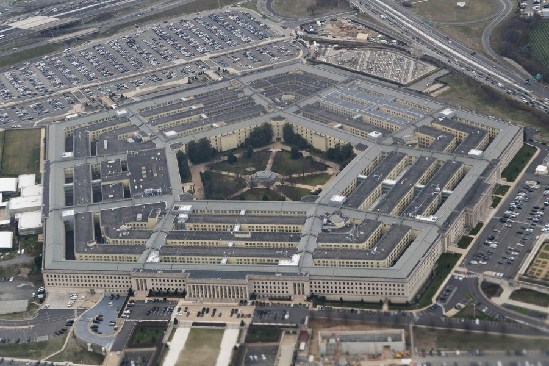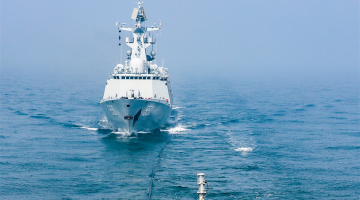
By Fang Xiaozhi
The US Secretary of Defense Mark Esper recently rolled out an ambitious naval expansion program in Washington, vowing to put in place a 500-ship navy by 2045, which is about 50% more than the “355-ship Navy” plan proposed by Trump in 2017 soon after he took office.
While announcing the 500-ship naval plan right on the eve of the forthcoming US presidential election, Esper, as always, hyped up the so-called “China threat”, accusing China’s growing naval forces of seriously obstructing the implementation of the so-called “America first” strategy in the Indo-Pacific region and calling for necessary countermeasures.
Besides, America’s insufficient number of ships now has dragged its feet on accelerating the “Indo-Pacific” strategy. The US Navy has continuously found itself overstrained in performing missions and has seen several ship collisions and other major events. Therefore, increasing the number of ships is considered the most urgent need.
Under such circumstances, the US Navy plans to expand its fleet from 355 to 500 ships to maintain its global hegemony better.
Esper’s 500-ship plan will reduce the number of aircraft carriers while focusing on small ships and unmanned surface vehicles (USVs) to increase the number of military vessels largely. This marks a significant change in America’s concept of future naval buildup, which is to recalibrate more quickly to light and unmanned vessels and transform the US navy from an ocean-going force into one combining offensive and defensive capabilities. This is a “wild bet” as far as the navy’s future development is concerned.
For many years the US military has been indecisive on which type of ships to prioritize and has made some detours, not to mention the consistent budget strain. Building more naval vessels is a massive program entailing a considerable amount of capital, over which the White House, the Department of Defense, the U.S. Navy, other military services, and the US Congress have argued long and hard without reaching a consensus. That’s why the 355-ship goal doesn’t even have a detailed proposal yet.
According to the new ambitious plan, the U.S. Navy will add about 280 ships in the next 30 years, almost doubling the current size. The maintenance cost aside, the construction of such a large fleet alone would cost a fortune, so the plan can cause heated debates among the parties.
At present, the COVID-19 pandemic has mired the US in an abyss of chaos, economic slowdown, and a high unemployment rate. The country’s national debts have amounted to USD23 trillion, more than its annual GDP, and the unrest triggered by domestic racial conflicts is disturbing. Announcing such a massive and capital-intensive military buildup program at such a moment will undoubtedly further aggravate the domestic disputes.
In whatever light we look at it, the 500-ship plan isn’t realistic – so ambitious that it is detached from the national reality. The various restrictions and uncertainties may well render America’s future naval ship development unorganized and unorderly.
Moreover, that the US Department of Defense submitted this naval fleet development proposal to the White House right before the presidential election on November 3 is typically speculative. The move was motivated by the incumbent administration to secure the support of the Pentagon and the military industry for Trump’s reelection, regardless of whether the wild bet can come through in the end or what consequences it may have.
(The author is a researcher at the Center for Asia-Pacific Development Studies of Nanjing University. The information, ideas or opinions appearing in this article do not necessarily reflect the views of eng.chinamil.com.cn.)









